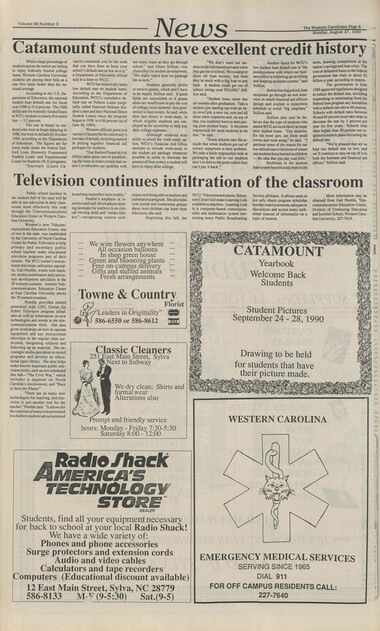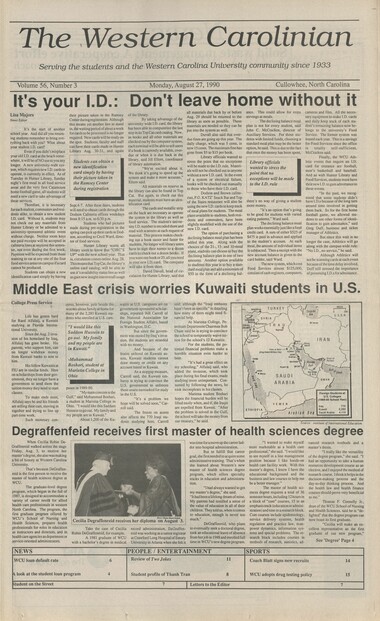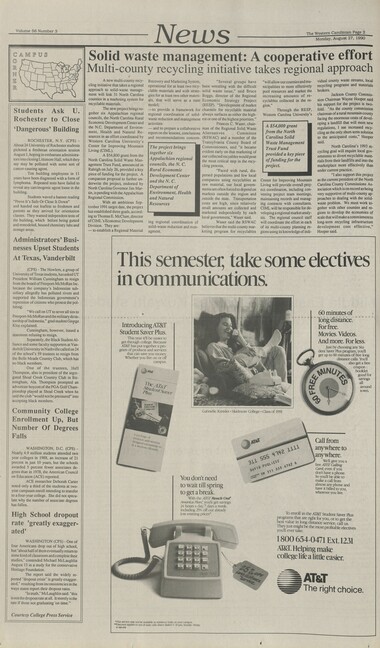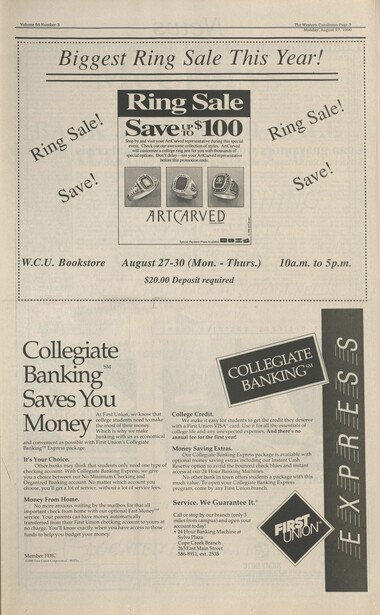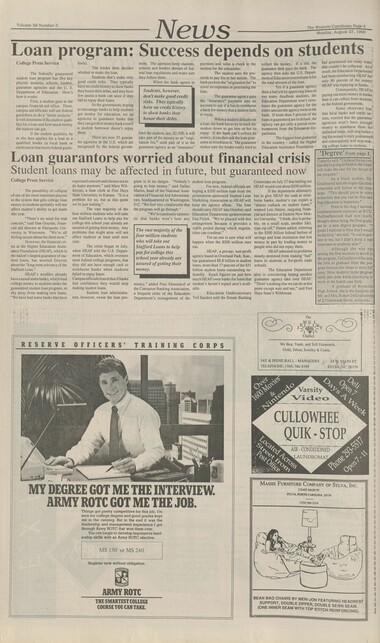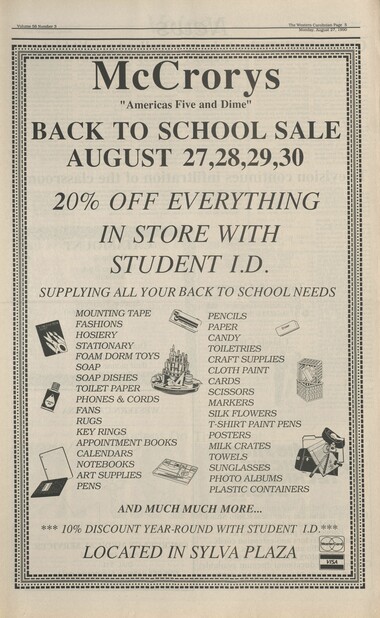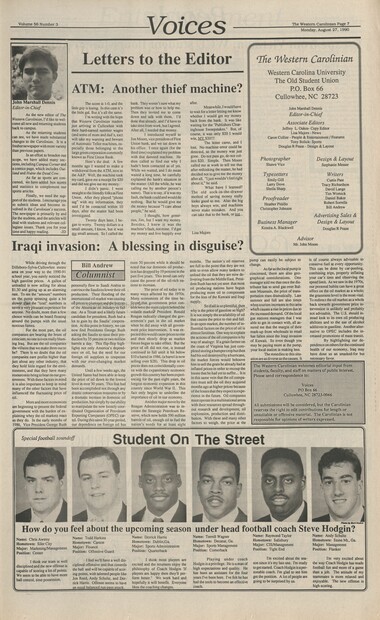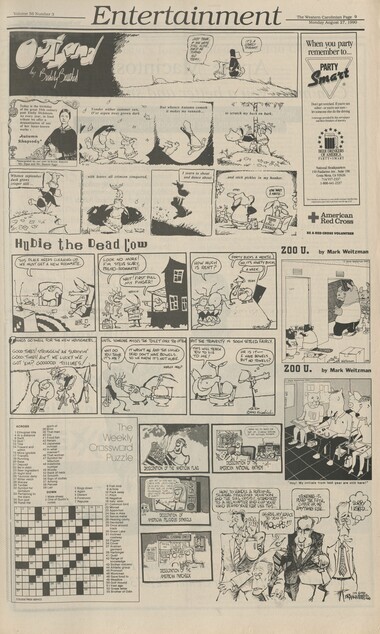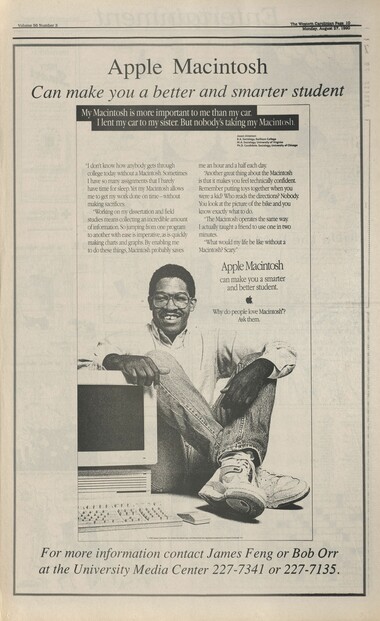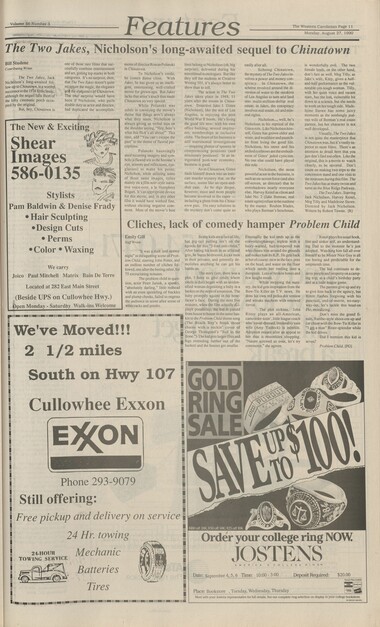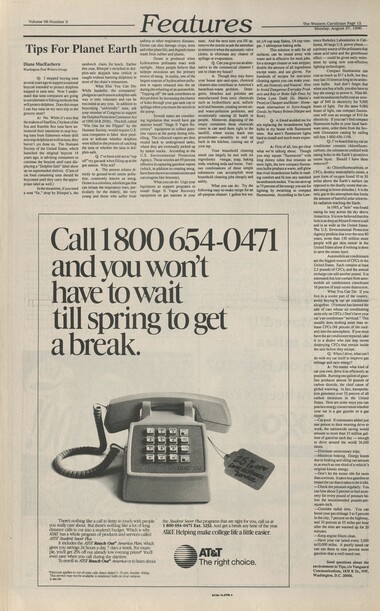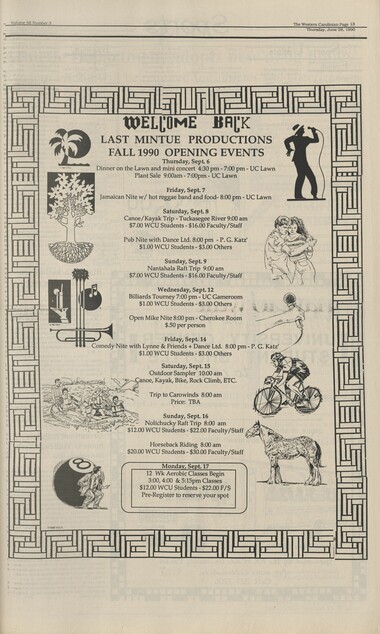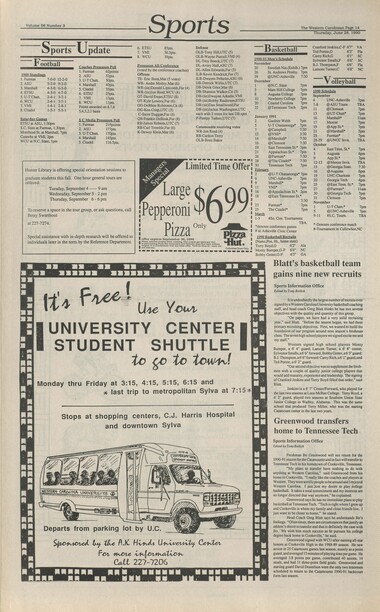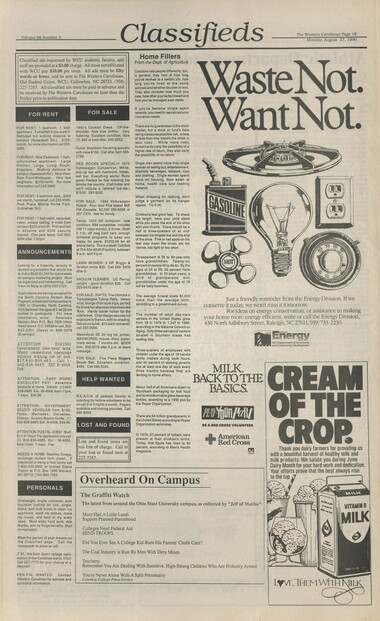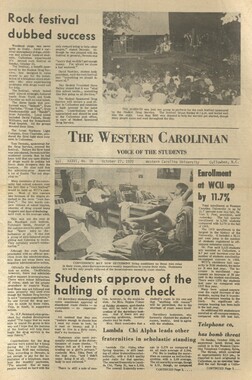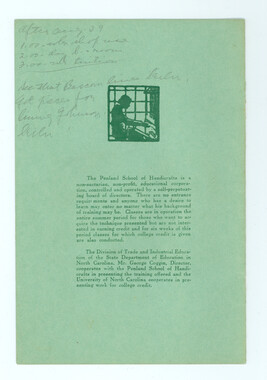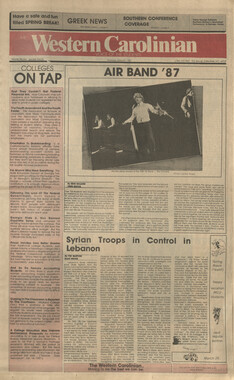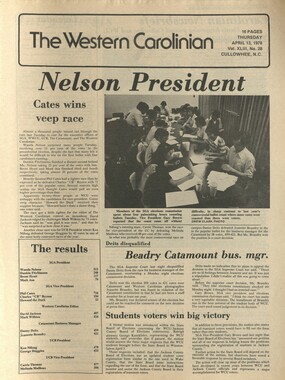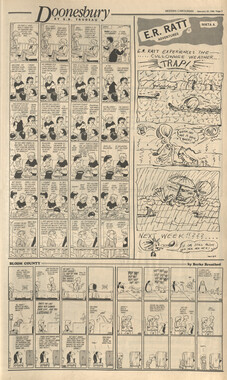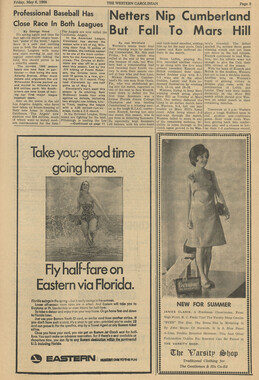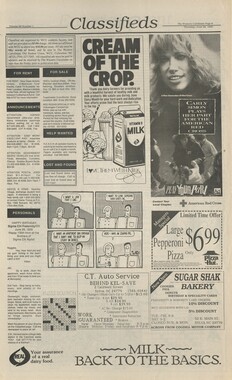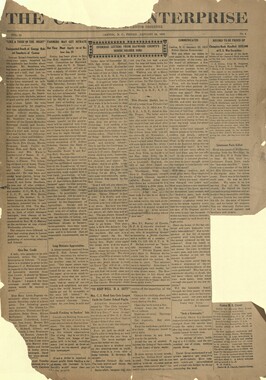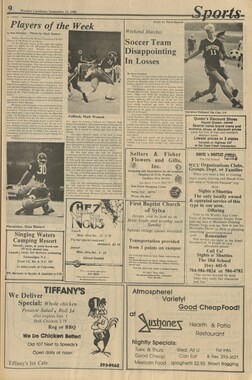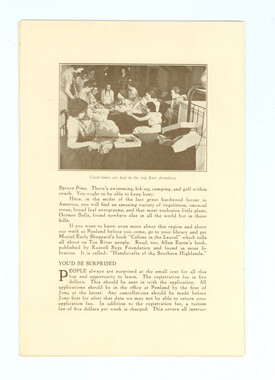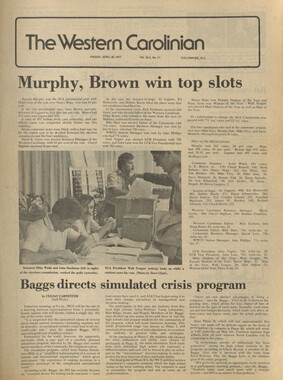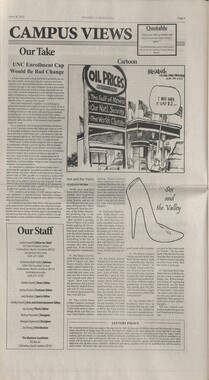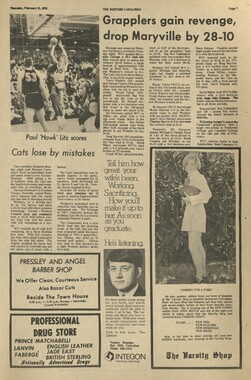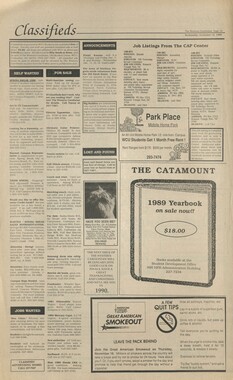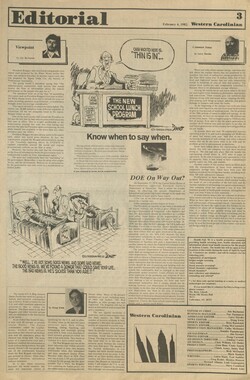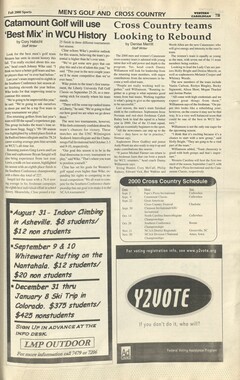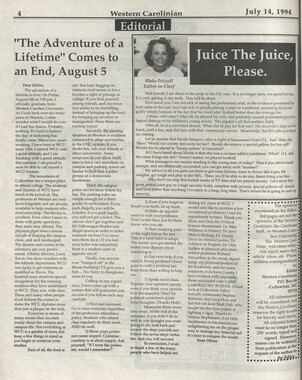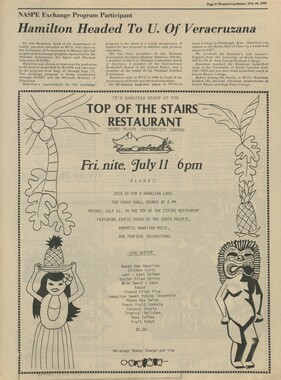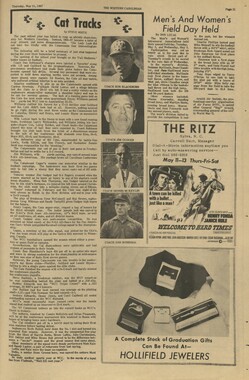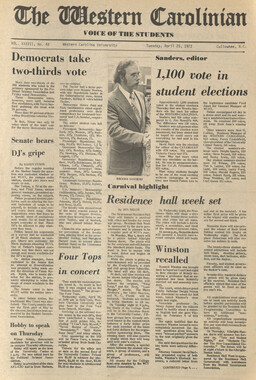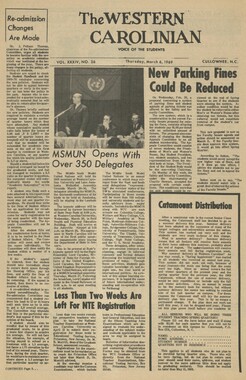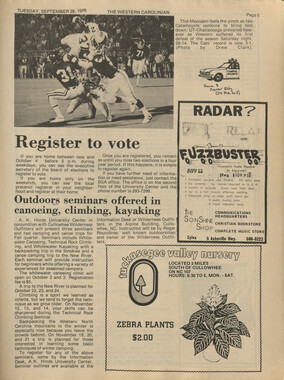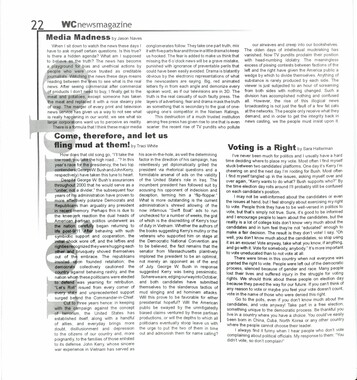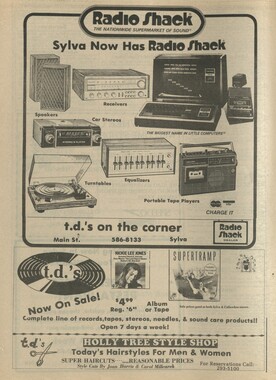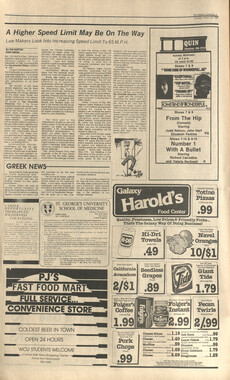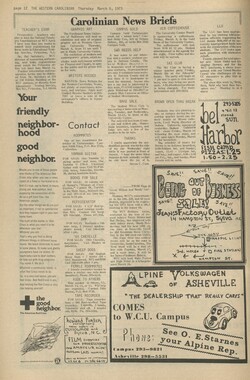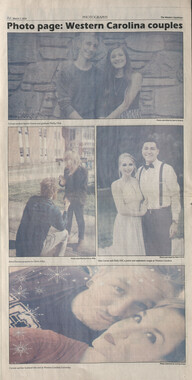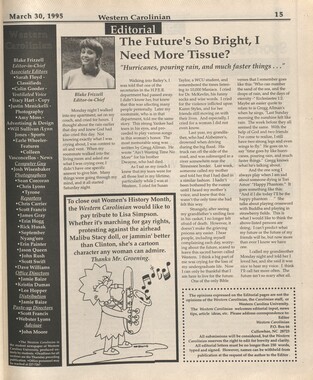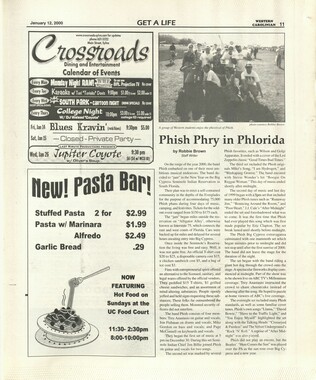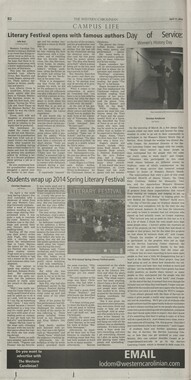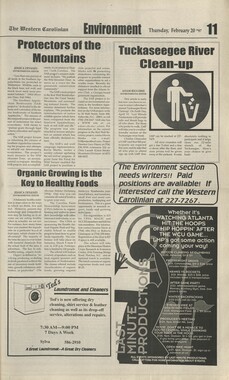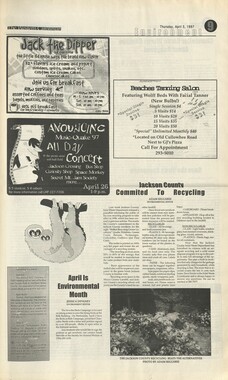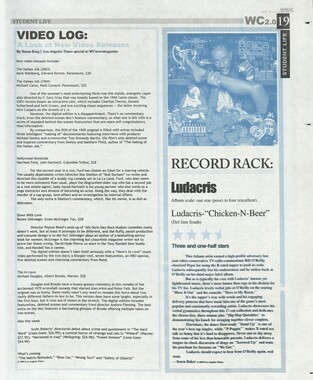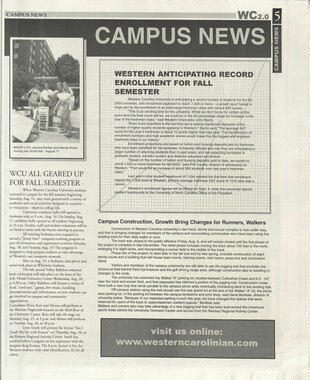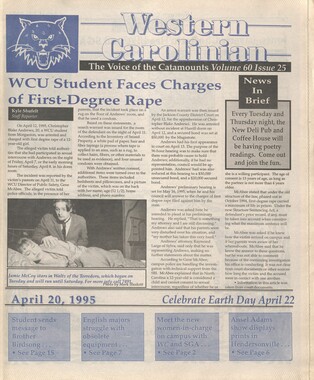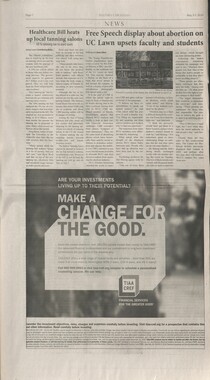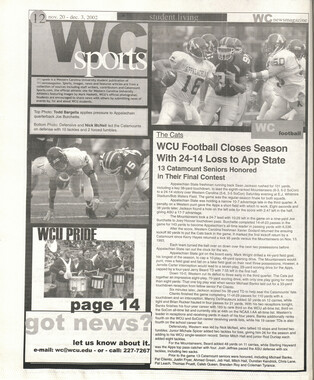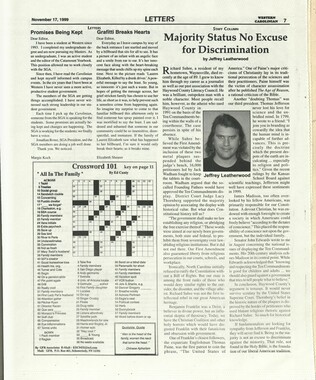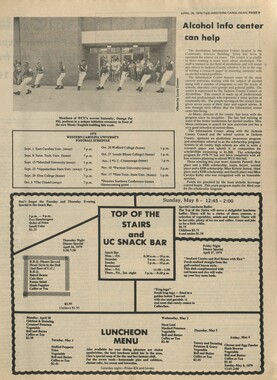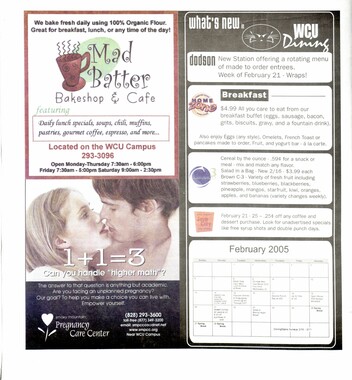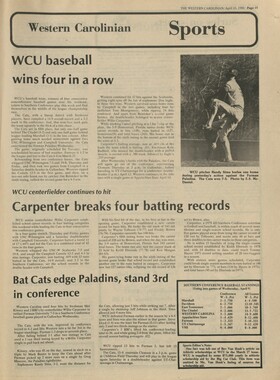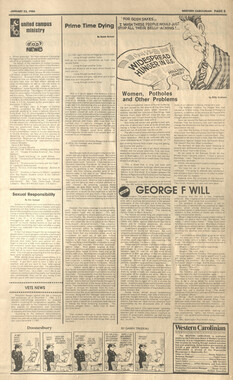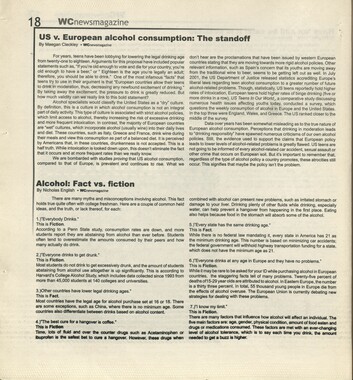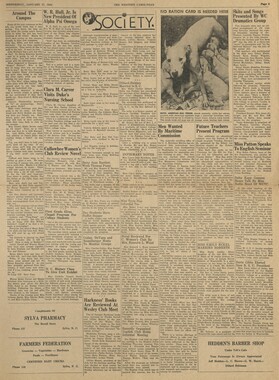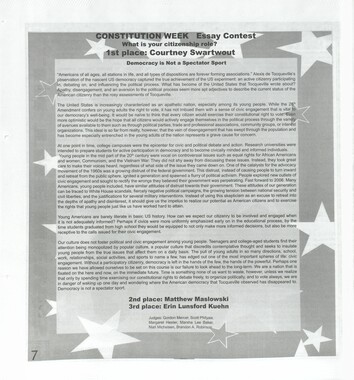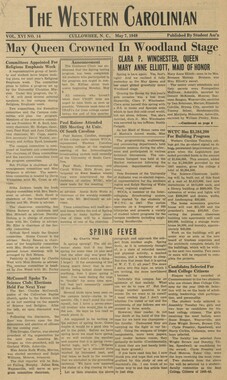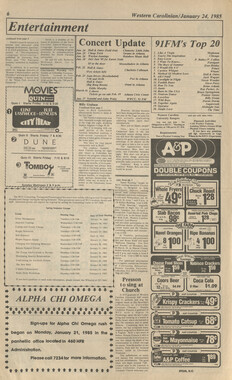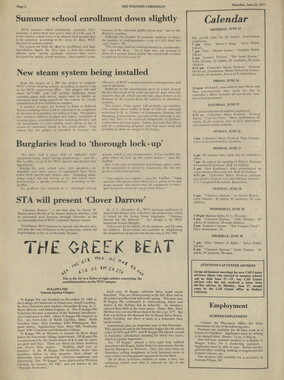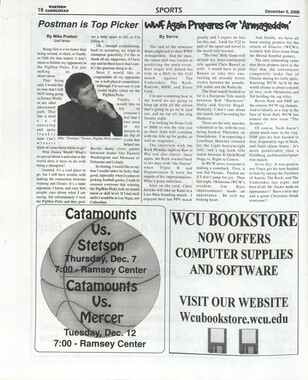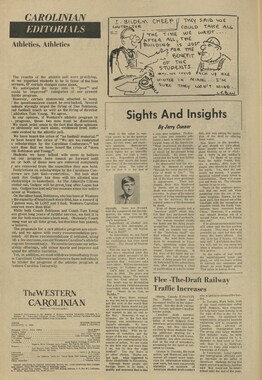Western Carolina University (21)
View all
- Canton Champion Fibre Company (2308)
- Cherokee Traditions (291)
- Civil War in Southern Appalachia (165)
- Craft Revival (1942)
- George Masa Collection (137)
- Great Smoky Mountains - A Park for America (3080)
- Highlights from Western Carolina University (422)
- Horace Kephart (998)
- Journeys Through Jackson (159)
- LGBTQIA+ Archive of Jackson County (89)
- Oral Histories of Western North Carolina (318)
- Picturing Appalachia (6617)
- Stories of Mountain Folk (413)
- Travel Western North Carolina (153)
- Western Carolina University Fine Art Museum Vitreograph Collection (129)
- Western Carolina University Herbarium (92)
- Western Carolina University: Making Memories (738)
- Western Carolina University Publications (2491)
- Western Carolina University Restricted Electronic Theses and Dissertations (146)
- Western North Carolina Regional Maps (71)
- World War II in Southern Appalachia (131)
University of North Carolina Asheville (6)
View all
- Allanstand Cottage Industries (62)
- Appalachian National Park Association (53)
- Bennett, Kelly, 1890-1974 (1463)
- Berry, Walter (76)
- Brasstown Carvers (40)
- Carver, George Washington, 1864?-1943 (26)
- Cathey, Joseph, 1803-1874 (1)
- Champion Fibre Company (233)
- Champion Paper and Fibre Company (297)
- Cherokee Indian Fair Association (16)
- Cherokee Language Program (22)
- Crowe, Amanda (40)
- Edmonston, Thomas Benton, 1842-1907 (7)
- Ensley, A. L. (Abraham Lincoln), 1865-1948 (275)
- Fromer, Irving Rhodes, 1913-1994 (70)
- George Butz (BFS 1907) (46)
- Goodrich, Frances Louisa (120)
- Grant, George Alexander, 1891-1964 (96)
- Heard, Marian Gladys (60)
- Kephart, Calvin, 1883-1969 (15)
- Kephart, Horace, 1862-1931 (313)
- Kephart, Laura, 1862-1954 (91)
- Laney, Gideon Thomas, 1889-1976 (439)
- Masa, George, 1881-1933 (61)
- McElhinney, William Julian, 1896-1953 (44)
- Niggli, Josephina, 1910-1983 (10)
- North Carolina Park Commission (105)
- Osborne, Kezia Stradley (9)
- Owens, Samuel Robert, 1918-1995 (11)
- Penland Weavers and Potters (36)
- Roberts, Vivienne (15)
- Roth, Albert, 1890-1974 (142)
- Schenck, Carl Alwin, 1868-1955 (1)
- Sherrill's Photography Studio (2565)
- Southern Highland Handicraft Guild (127)
- Southern Highlanders, Inc. (71)
- Stalcup, Jesse Bryson (46)
- Stearns, I. K. (213)
- Thompson, James Edward, 1880-1976 (226)
- United States. Indian Arts and Crafts Board (130)
- USFS (683)
- Vance, Zebulon Baird, 1830-1894 (1)
- Weaver, Zebulon, 1872-1948 (58)
- Western Carolina College (230)
- Western Carolina Teachers College (282)
- Western Carolina University (2008)
- Western Carolina University. Mountain Heritage Center (18)
- Whitman, Walt, 1819-1892 (10)
- Wilburn, Hiram Coleman, 1880-1967 (73)
- Williams, Isadora (3)
- Cain, Doreyl Ammons (0)
- Crittenden, Lorraine (0)
- Rhodes, Judy (0)
- Smith, Edward Clark (0)
- Appalachian Region, Southern (3032)
- Asheville (N.C.) (1945)
- Avery County (N.C.) (26)
- Blount County (Tenn.) (195)
- Buncombe County (N.C.) (1680)
- Cherokee County (N.C.) (283)
- Clay County (N.C.) (556)
- Graham County (N.C.) (238)
- Great Smoky Mountains National Park (N.C. and Tenn.) (535)
- Haywood County (N.C.) (3573)
- Henderson County (N.C.) (70)
- Jackson County (N.C.) (4925)
- Knox County (Tenn.) (35)
- Knoxville (Tenn.) (13)
- Lake Santeetlah (N.C.) (10)
- Macon County (N.C.) (421)
- Madison County (N.C.) (216)
- McDowell County (N.C.) (39)
- Mitchell County (N.C.) (135)
- Polk County (N.C.) (35)
- Qualla Boundary (982)
- Rutherford County (N.C.) (78)
- Swain County (N.C.) (2185)
- Transylvania County (N.C.) (270)
- Watauga County (N.C.) (12)
- Waynesville (N.C.) (86)
- Yancey County (N.C.) (72)
- Aerial Photographs (3)
- Aerial Views (60)
- Albums (books) (4)
- Articles (1)
- Artifacts (object Genre) (228)
- Bibliographies (1)
- Biography (general Genre) (2)
- Cards (information Artifacts) (38)
- Clippings (information Artifacts) (193)
- Copybooks (instructional Materials) (3)
- Crafts (art Genres) (622)
- Depictions (visual Works) (21)
- Design Drawings (1)
- Digital Moving Image Formats (2)
- Drawings (visual Works) (185)
- Envelopes (115)
- Exhibitions (events) (1)
- Facsimiles (reproductions) (1)
- Fiction (general Genre) (4)
- Financial Records (12)
- Fliers (printed Matter) (67)
- Glass Plate Negatives (381)
- Guidebooks (2)
- Internegatives (10)
- Interviews (823)
- Land Surveys (102)
- Letters (correspondence) (1070)
- Manuscripts (documents) (618)
- Maps (documents) (177)
- Memorandums (25)
- Minutes (administrative Records) (59)
- Negatives (photographs) (6090)
- Newsletters (1290)
- Newspapers (2)
- Notebooks (8)
- Occupation Currency (1)
- Paintings (visual Works) (1)
- Pen And Ink Drawings (1)
- Periodicals (194)
- Personal Narratives (10)
- Photographs (12977)
- Plans (maps) (1)
- Poetry (6)
- Portraits (4568)
- Postcards (329)
- Programs (documents) (181)
- Publications (documents) (2444)
- Questionnaires (65)
- Relief Prints (26)
- Sayings (literary Genre) (1)
- Scrapbooks (282)
- Sheet Music (2)
- Slides (photographs) (402)
- Songs (musical Compositions) (2)
- Sound Recordings (802)
- Specimens (92)
- Speeches (documents) (18)
- Tintypes (photographs) (8)
- Transcripts (329)
- Text Messages (0)
- A.L. Ensley Collection (275)
- Appalachian Industrial School Records (7)
- Appalachian National Park Association Records (336)
- Axley-Meroney Collection (2)
- Bayard Wootten Photograph Collection (20)
- Bethel Rural Community Organization Collection (7)
- Blumer Collection (5)
- C.W. Slagle Collection (20)
- Canton Area Historical Museum (2110)
- Carlos C. Campbell Collection (462)
- Cataloochee History Project (64)
- Cherokee Studies Collection (4)
- Daisy Dame Photograph Album (5)
- Daniel Boone VI Collection (1)
- Doris Ulmann Photograph Collection (112)
- Elizabeth H. Lasley Collection (1)
- Elizabeth Woolworth Szold Fleharty Collection (4)
- Frank Fry Collection (95)
- George Masa Collection (173)
- Gideon Laney Collection (452)
- Hazel Scarborough Collection (2)
- Hiram C. Wilburn Papers (28)
- Historic Photographs Collection (236)
- Horace Kephart Collection (861)
- Humbard Collection (33)
- Hunter and Weaver Families Collection (1)
- I. D. Blumenthal Collection (4)
- Isadora Williams Collection (4)
- Jesse Bryson Stalcup Collection (47)
- Jim Thompson Collection (224)
- John B. Battle Collection (7)
- John C. Campbell Folk School Records (80)
- John Parris Collection (6)
- Judaculla Rock project (2)
- Kelly Bennett Collection (1482)
- Love Family Papers (11)
- Major Wiley Parris Civil War Letters (3)
- Map Collection (12)
- McFee-Misemer Civil War Letters (34)
- Mountain Heritage Center Collection (4)
- Norburn - Robertson - Thomson Families Collection (44)
- Pauline Hood Collection (7)
- Pre-Guild Collection (2)
- Qualla Arts and Crafts Mutual Collection (12)
- R.A. Romanes Collection (681)
- Rosser H. Taylor Collection (1)
- Samuel Robert Owens Collection (94)
- Sara Madison Collection (144)
- Sherrill Studio Photo Collection (2558)
- Smoky Mountains Hiking Club Collection (616)
- Stories of Mountain Folk - Radio Programs (374)
- The Reporter, Western Carolina University (510)
- Venoy and Elizabeth Reed Collection (16)
- WCU Gender and Sexuality Oral History Project (36)
- WCU Mountain Heritage Center Oral Histories (25)
- WCU Oral History Collection - Mountain People, Mountain Lives (71)
- WCU Students Newspapers Collection (1923)
- Western North Carolina Tomorrow Black Oral History Project (69)
- William Williams Stringfield Collection (2)
- Zebulon Weaver Collection (109)
- African Americans (390)
- Appalachian Trail (35)
- Artisans (521)
- Cherokee art (84)
- Cherokee artists -- North Carolina (10)
- Cherokee language (21)
- Cherokee pottery (101)
- Cherokee women (208)
- Church buildings (190)
- Civilian Conservation Corps (U.S.) (111)
- College student newspapers and periodicals (2012)
- Dams (108)
- Dance (1023)
- Education (222)
- Floods (63)
- Folk music (1015)
- Forced removal, 1813-1903 (2)
- Forest conservation (220)
- Forests and forestry (1198)
- Gender nonconformity (4)
- Great Smoky Mountains National Park (N.C. and Tenn.) (181)
- Hunting (47)
- Landscape photography (25)
- Logging (122)
- Maps (83)
- Mines and mineral resources (9)
- North Carolina -- Maps (18)
- Paper industry (38)
- Postcards (255)
- Pottery (135)
- Railroad trains (72)
- Rural electrification -- North Carolina, Western (3)
- School integration -- Southern States (2)
- Segregation -- North Carolina, Western (5)
- Slavery (5)
- Sports (452)
- Storytelling (243)
- Waterfalls -- Great Smoky Mountains (N.C. and Tenn.) (66)
- Weaving -- Appalachian Region, Southern (280)
- Wood-carving -- Appalachian Region, Southern (328)
- World War, 1939-1945 (174)
Western Carolinian Volume 56 Number 03
Item
Item’s are ‘child’ level descriptions to ‘parent’ objects, (e.g. one page of a whole book).
-
-
Volume 56 Number 3 News The Western Carolinian Page 6 Monday, August 27, 1990 Catamount students have excellent credit history While a large percentage of students across the nation are failing to repay federally funded college loans. Western Carolina University students are paying their bills at a rate five times better than the national average. According to the U.S. Department of Education, the national student loan default rate for fiscal year 1988 is 15.6 percent. The 1988 defalt rate for federally funded loans to WCU students is nearly five times less - - 3.2 percent. The rate is based on students who were to begin repaying in 1988, but were in default by October 1989, according to the Department of Education. The figures are for loans made under the federal Stafford Loan (formerly Guaranteed Student Loan) and Supplemental Loans for Students (SLS) programs. "Secretary (Lauro Ca- vazos) commends you for the work that you have done to keep your school's default rate as low as it is," a Department of Education official said in a letter to WCU. WCU has historically had a low default rate on student loans. According to the Department of Education, WCU's cumulative default rate on Perkins Loans (originally called National Defense Student Loans and later National Direct Student Loans) since the program began in 1958 is 4.96 percent (as of June 30,1989). Western officials point to a variety of factors for the university's low rate of default, including caution in putting together financial aid packages for students. "Our Student Financial Aid Office takes great care in establishing the loans to make certain that we don't overburden our students with too many loans as they go through school," said Glenn Stillion, vice chancellor for student development "We really watch how we package the awards." Students generally prefer to receive grants, which don't have to be repaid, Stillion said. If grant funds are unavailable or if grants alone are insufficient to pay the cost of college, most students' next preference is loan money, he said, while their last choice is work-study, in which eligible students are employed at the university to help pay their college expenses. Although students may prefer to avoid the work-study option, WCU's Financial Aid Office attempts to include work-study in the student aid package whenever possible in order to decrease the amount of loan money a student will have to repay after college. "We don't want our students to be indentured servants when they get out of school. We could give them all loan money, but then they're stuck with a big loan to pay back. A student could get out of school owing over $20,000," Stillion said. "Student loans come due six months after graduation. Take a student just starting out with an entry-level job, a new car, rent and all those other expenses and, on top of that, you suddenly have to start paying your student loans. It becomes impractical for most students to do that," he said. "Some schools take the attitude that when students get out of school, repayment is their problem. We take a fairly responsible look at packaging the aid so our students aren' t in debt to the point where they can't pay it back." Another factor for WCU's low student loan default rate is "the assiduousness with which our business office is following up on billing and keeping accounts current," said Stillion. Before leaving school, loan recipients go through an exit interview in which financial aid officers design and explain a repayment schedule to avoid "big surprises," Stillion said. Stillion also said he believes that the type of students who attend WCU are most likely to repay their student loans. "Our students, for the most part, are from small towns and rural areas," he said. "I attribute some of the reason for our low default rate to the kinds of values our students have learned as children — the idea that you pay your bills." Problems in the student loan system have recendy been in the news, drawing comparisons to the nation's savings and loan crisis. The cost of defaulted loans to the federal government has risen to about $2 billion a year, according to reports. The government in June 1989 approved regulations designed to reduce the default rate, including suspending or terminating from the federal loan program any institution with a default rate above 60 percent Schools with default rates between 40 and 60 percent must take steps to decrease the rate by 5 percent per year for five years. Schools with rates higher than 20 percent are required to submitplans for cutting the default rate. "We're pleased that we've kept our default rate so low, and we'll continue to stay on top of it in both the business and financial aid offices," Stillion said. id Television continues infiltration of the classroom : : ■ Public school teachers in the western half of the state will be able to use television in their classrooms more effectively this year through the Telecommunications Education Center at Western Carolina University. Western's new Telecommunications Education Center, one of two in the state, was established by the University of North Carolina Center for Public Television to help primary and secondary public school teachers make educational television programs part of their lessons. The WCU center's instructional television utilization specialist, Gail Pemble, works with teachers, media coordinators and curriculum development specialists in the 50 western counties. Another Telecommunications Education Center at East Carolina University serves the 50 eastern counties. Pemble provides school personnel with UNC .Center,.for Public Television program schedules as well as information on new technologies and trends in the telecommunications field. She also gives workshops on how to operate equipment and use instructional television in the regular class curriculum, integrating subjects and following up on material. She encourages media specialists to record programs and develop an educational tapes library. She also helps make known important public television series, such as two scheduled this fall—"The Civil War," which includes a segment on North Carolina's involvement, and "Race to Save the Planet." "There are so many new technologies for teaching, and television is just another tool for the teacher," Pemble said. "It allows for the expertise of many to be presented in a fashion students are accustomed to and may remember more readily." Pemble's emphasis at in- service and staff development training seminars for teachers is on criu- cal viewing skills and "media literacy"—recognizing camera tech niques and being able to analyze and summarize a program. She also talks with parent and community groups about how children can learn from television, she said. Beginning this fall, the WCU Telecommunicaitons Education Center will make Learning Link available to teachers. Learning Link is a computer-based communications and information system connecting many Public Broadcasting Service affiliates. It allows users to not only obtain program schedules butalso makecomments, take part in discussions and access many additional sources of information on a topic of interest. More information may be obtained from Gail Pemble, Telecommunications Education Center, Division of Continuing Education and Summer School, Western Carolina University, 227-7410. •*• We wire flowers anywhere *" All occasion balloons In shop green house ' * * Green and blooming plants * ■ * Free on-campus delivery Gifts and stuffed animals Fresh arrangements Towne & Country Florist • • i ** I frit prorl __■■■_ "Leaders in Originality" MH 586-6550 or 586-8612 rjjjjj CATAMOUNT Yearbook Welcome Back Students Student Pictures September 24 - 28, 1990 Classic Cleaners 25 ljiast Main Street, Sylva Next to Subway We dry clean: Shirts and formal wear Alterations also Prompt and friendly service hours: Monday - Friday 7:30-5:30 Saturday 8:00-12:00 Drawing to be held for students that have their picture made. Radio fhaek MUSBSS9 B&'M.'C TECHNOLOG STORE DEALER Students, find all your equipment necessary for back to school at your local Radio Shack! We have a wide variety of: Phones and phone accessories Surge protectors and extension cords Audio and video cables Calculators and tape recorders Computers (Educational discount available) 12 East Main Street, Sylva, NC 28779 586-8133 M-F (9-5:30) Sat.(9-5) WESTERN CAROLINA s. EMERGENCY MEDICAL SERVICES SERVING SINCE 1965 DIAL 911 FOR OFF CAMPUS RESIDENTS CALL: 227-7640 !
Object
Object’s are ‘parent’ level descriptions to ‘children’ items, (e.g. a book with pages).
-
The Western Carolinian is Western Carolina University's student-run newspaper. The paper was published as the Cullowhee Yodel from 1924 to 1931 before changing its name to The Western Carolinian in 1933.
-
